1107 items found
Page 4 of 12
-
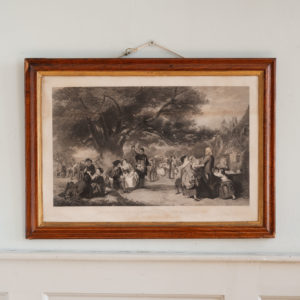
An English Merry-Making in the Olden Time – William Powell Frith
£350An English Merry-Making in the Olden Time – William Powell Frith
An large oak and gilt framed engraving by William Powell Frith showing a village celebration of the mid 17th Century taking place in the shade of a large oak tree.£350 -
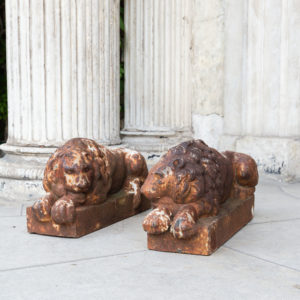
Pair of cast iron Canova lions
£350 the pairPair of cast iron Canova lions
the original sculpted by Antonio Canova in 1792 for the tomb of Pope Clement XIII in St. Peter's, Rome.£350 the pair -
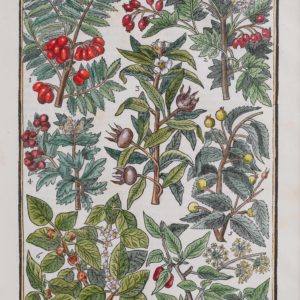
Paradisi in Sole Paradisus Terrestris by John Parkinson (1567-1650)
£350 eachParadisi in Sole Paradisus Terrestris by John Parkinson (1567-1650)
John Parkinson, born c1566, started his working life in medicine, beginning his apprenticeship to a London apothecary. He went on to become one of the most respected apothecaries in Britain. He was elected junior warden of the Society of Apothecaries in August 1620 but at the beginning of 1622, he asked for, and was granted, permission to give up his duties in the Society and then concentrated on his garden in London's Long Acre. Here he started researching and writing his first book: Paradisi in sole paradisus terrestris, and maintained close relations with other important English and Continental botanists, herbalists and plantsmen.£350 each -
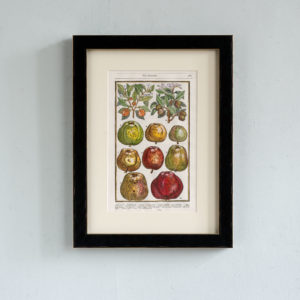
Paradisi in Sole Paradisus Terrestris by John Parkinson (1567-1650)
£350 eachParadisi in Sole Paradisus Terrestris by John Parkinson (1567-1650)
John Parkinson, born c1566, started his working life in medicine, beginning his apprenticeship to a London apothecary. He went on to become one of the most respected apothecaries in Britain. He was elected junior warden of the Society of Apothecaries in August 1620 but at the beginning of 1622, he asked for, and was granted, permission to give up his duties in the Society and then concentrated on his garden in London's Long Acre. Here he started researching and writing his first book: Paradisi in sole paradisus terrestris, and maintained close relations with other important English and Continental botanists, herbalists and plantsmen.£350 each -
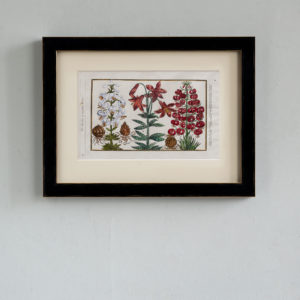
Paradisi in Sole Paradisus Terrestris by John Parkinson (1567-1650)
£350 eachParadisi in Sole Paradisus Terrestris by John Parkinson (1567-1650)
John Parkinson, born c1566, started his working life in medicine, beginning his apprenticeship to a London apothecary. He went on to become one of the most respected apothecaries in Britain. He was elected junior warden of the Society of Apothecaries in August 1620 but at the beginning of 1622, he asked for, and was granted, permission to give up his duties in the Society and then concentrated on his garden in London's Long Acre. Here he started researching and writing his first book: Paradisi in sole paradisus terrestris, and maintained close relations with other important English and Continental botanists, herbalists and plantsmen.£350 each -
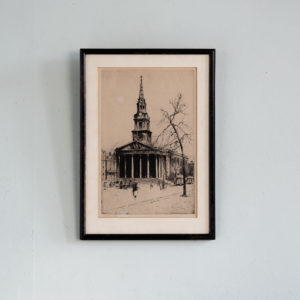
Dorothy Woollard, St. Martin in the Fields,
£350Dorothy Woollard, St. Martin in the Fields,
A framed and mounted original etching by Dorothy Woollard of St Martin-in-the-Fields church, Trafalgar Square. Signed in pencil by the artist.£350 -
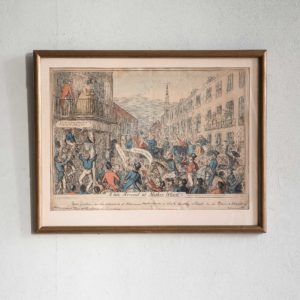
A late Arrival at Mother Wood’s
£350A late Arrival at Mother Wood’s
Hand-coloured etching by George Cruikshank, published by Mr George Humphrey. The scene depicts Caroline of Brunswick, the estranged wife of the newly ascended King George IV, saluting and addressing an adoring crowd from the balcony of Alderman Wood's residence in South Audley Street, London. Alderman Woods was a low-born hop merchant who's investments in a colouring agent for porter had supplied him with the means to further career in Radical politics. He achieved an almost unprecedented two-term mayoralty of the City of London where his opposition to the governments repressive domestic legislation and condemnation of the Peterloo massacre, as well as his perceived upstart vulgarity, made him a hate-figure for Tories and Loyalists. His Whig-Radicalism continued into his term as MP for the City of London and when, in 1820 he saw the chance to embarrass the King and his adherents by the return of his absent and unloved wife, he took it boldly. Woods persuaded Caroline of Brunswick to terminate the discreet ongoing negotiations for a settlement she had been engaged in with the King and instead return, splendidly and publicly, to the capital to assert her claim to be rightful Queen of England. Alderman Woods arranged for Caroline to be conveyed in an open carriage through the heart of London to his house on South Audley Street where she became the unlikely figure-head of Radical Whiggery in the metropolis. The diarist Charles Greville noted of the procession to the house on the 6th of June 1820: "The Queen arrived in London yesterday at seven o’clock… She travelled in an open landau, Alderman Wood sitting by her side and Lady Anne Hamilton and another woman opposite. Everybody was disgusted at the vulgarity of Wood in sitting in the place of honour, while the Duke of Hamilton’s sister was sitting backwards in the carriage". Caroline would spend the next two months at South Audley Street where the the great and the good of British radicalism paid her court amidst the crowds outside South Audley Street.£350 -
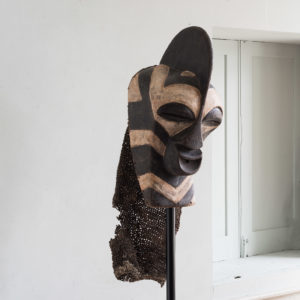
Songye Kilumwe Kifwebe mask (A)
£350Songye Kilumwe Kifwebe mask (A)
Very large Kifwebe mask with exaggerated sagittal crest. It is believed that the sagittal crest and conical protrusion contain the magical strength of the mask.£350 -
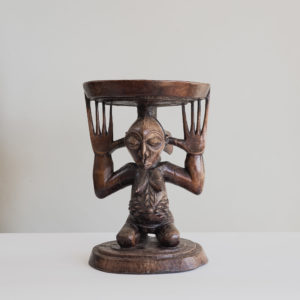
Luba stool,
£350Luba stool,
Luba art relates most commonly to the Kings and Chiefs of the Congolese Luba tribe, who would assert their power by display of ceremonial objects during ceremonies. Stools were considered to be the most important of these objects as they would serve not only as a seat but as a receptacle for the Chief’s spirit. The ruler is thus figuratively and literally supported by a caryatid figure - in this case a kneeling female ancestor with elongated and outstretched fingertips. The deep carvings seen on her stomach allude to the maternal - such markings were common among many matrilineal societies in Africa to emphasise and protect the navel as the threshold between oneself, one’s mother and one’s own lineage.£350 -
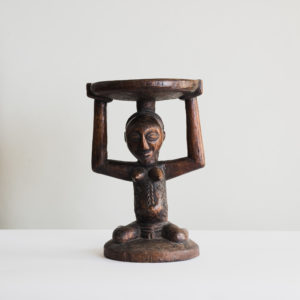
Tabwa stool
£350Tabwa stool
Congolese Tabwa art has distinct similarities to that of the Luba tribe, and its stools are used also in ceremonies by the Kings and Chiefs of the community with a means of establishing power and authority. The key difference seen between the two is the Tabwa’s traditional depiction of braided hair as a carved extension of the head and checkerboard-style scarification of the woman’s body.£350 -
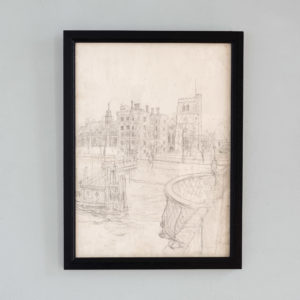
Lambeth Palace and Church by Hubert Williams (1905-1989)
£350Lambeth Palace and Church by Hubert Williams (1905-1989)
Original pencil sketch of Lambeth Palace and Church seen from the old Lambeth suspension bridge. Hubert Williams was an accomplished artist and illustrator who had the confidence to include the detail of everyday life in his views. Signed. framed£350 -
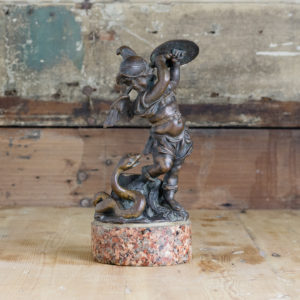
Nineteenth century bronze of the Heroic Putti,
£350Nineteenth century bronze of the Heroic Putti,
modelled holding shield and sword aloft on circular Aswan marble plinth base, possibly German, after the originals from the Mariensäule column in Munich by Ferdinand Murmann.£350 -
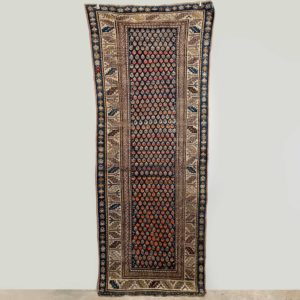
A vintage Kurdish runner,
£340A vintage Kurdish runner,
the indigo field with all-over design of fruit or sprouting seeds, some picked out in red and orange, within a blue and ivory border, low pile- to the foundation in places- cleaned,£340 -
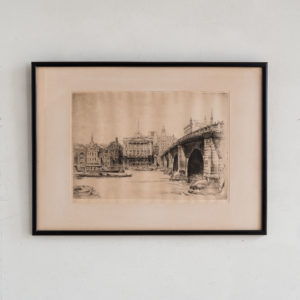
London Bridge by Frederick A Farrell (1892-1935),
£340 -
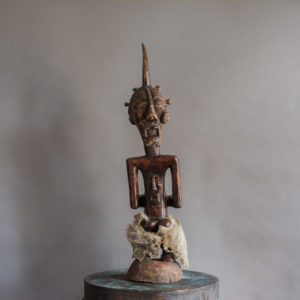
Songye Janus standing power figure,
£325Songye Janus standing power figure,
Congolese double-faced maternal power figure, adorned with animal hide and cowrie shells. The Songye power figure serves to protect its community from evil spirits.£325 -
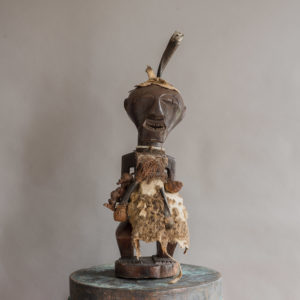
Songye standing male power figure,
£325Songye standing male power figure,
Standing male power figure from the Congolese Songye tribe, beautifully adorned with natural fibres, animal hide, and miniature power figure. These wooden power figures would have served to protect the Songye community from evil spirits and practitioners.£325 -
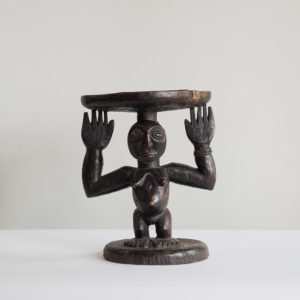
Luba stool
£325Luba stool
Luba art relates most commonly to the Kings and Chiefs of the Congolese Luba tribe, who would assert their power by display of ceremonial objects during ceremonies. Stools were considered to be the most important of these objects as they would serve not only as a seat but as a receptacle for the Chief’s spirit. The ruler is thus figuratively and literally supported by a caryatid figure - in this case a posed female ancestor with a carved headdress and jewellery.£325 -
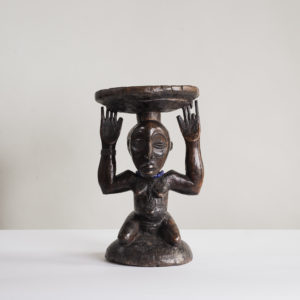
Luba stool
£325Luba stool
Luba art relates most commonly to the Kings and Chiefs of the Congolese Luba tribe, who would assert their power by display of ceremonial objects during ceremonies. Stools were considered to be the most important of these objects as they would serve not only as a seat but as a receptacle for the Chief’s spirit. The ruler is thus figuratively and literally supported by a caryatid figure - in this case a kneeling female ancestor adorned with beaded and carved jewellery. The deep carvings seen on her stomach allude to the maternal - such markings were common among many matrilineal societies in Africa to emphasise and protect the navel as the threshold between oneself, one’s mother and one’s own lineage. Damage to left hand.£325 -
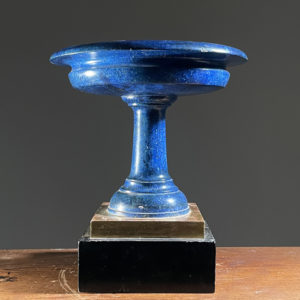
An unusual wooden parcel-gilt and painted tazza bowl on plinth
£320An unusual wooden parcel-gilt and painted tazza bowl on plinth
the turned tazza with stippled blue paint finish in simulation of lapis lazuli, the stepped base gilded and painted black,£320 -
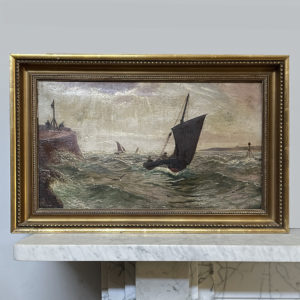
An oil on canvas seascape,
£320An oil on canvas seascape,
depicting a small fishing vessel sailing home between buoy and cliffs, probably a Scottish scene, signed bottom left,£320 -
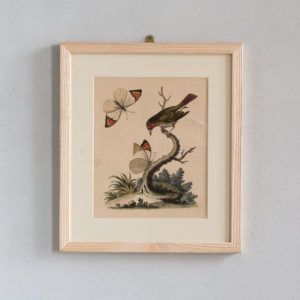
George Edwards,18th century ornithological engravings
£320 eachGeorge Edwards,18th century ornithological engravings
Featuring original hand-colour. Framed in natural ash.£320 each -
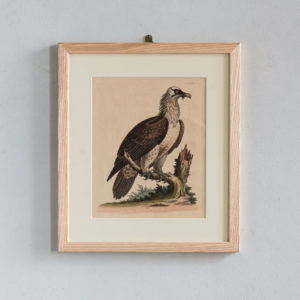
George Edwards,18th century ornithological engravings
£320 eachGeorge Edwards,18th century ornithological engravings
Featuring original hand-colour. Framed in natural ash.£320 each -
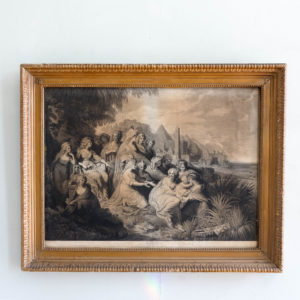
The Finding of Moses by John Keyse Sherwin
£320The Finding of Moses by John Keyse Sherwin
Etching /engraving, lettered with title flanking the Royal arms; and with names 'Painted and Engraved by J. K. Sherwin Historical Engraver / to his Majesty & to His Royal Highness the Prince of Wales / London. Published Jany. 18 1789 by R. Wilkinson No.58 Cornhill & I. K. Sherwin No.67 New Bond Street'. Presented in original gilt frame.£320 -
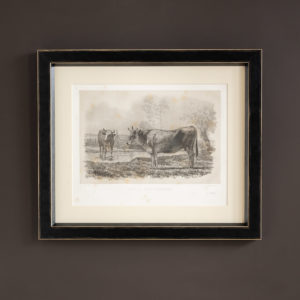
Original lithographs of Cattle Breeds published 1862, ‘Vache Parthenaise’,
£300 eachOriginal lithographs of Cattle Breeds published 1862, ‘Vache Parthenaise’,
Printed by Lemercier of Paris.£300 each -
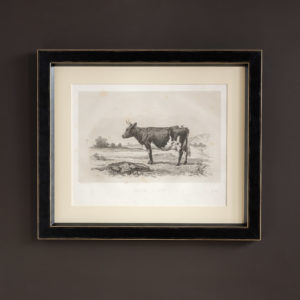
Original lithographs of Cattle Breeds published 1862, ‘Vache D’Ayr’,
£300 eachOriginal lithographs of Cattle Breeds published 1862, ‘Vache D’Ayr’,
Printed by Lemercier of Paris.£300 each -
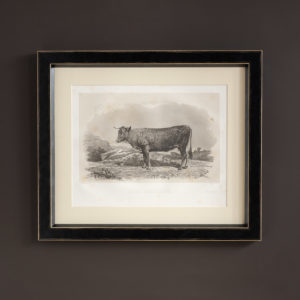
Original lithographs of Cattle Breeds published 1862, ‘Vache Garonnaise’,
£300 eachOriginal lithographs of Cattle Breeds published 1862, ‘Vache Garonnaise’,
Printed by Lemercier of Paris.£300 each -
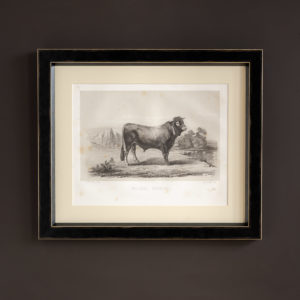
Original lithographs of Cattle Breeds published 1862, ‘Taureau Bazadais’,
£300 eachOriginal lithographs of Cattle Breeds published 1862, ‘Taureau Bazadais’,
Printed by Lemercier of Paris.£300 each -
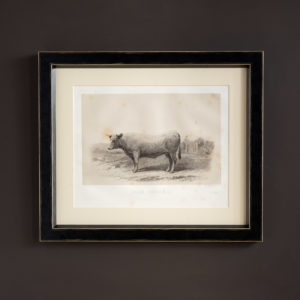
Original lithographs of Cattle Breeds published 1862, ‘Vache Charolaise’,
£300 eachOriginal lithographs of Cattle Breeds published 1862, ‘Vache Charolaise’,
Printed by Lemercier of Paris.£300 each -
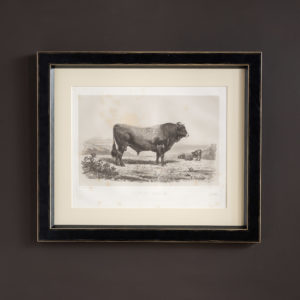
Original lithographs of Cattle Breeds published 1862, ‘Taureau Gascon’,
£300 eachOriginal lithographs of Cattle Breeds published 1862, ‘Taureau Gascon’,
Printed by Lemercier of Paris.£300 each -
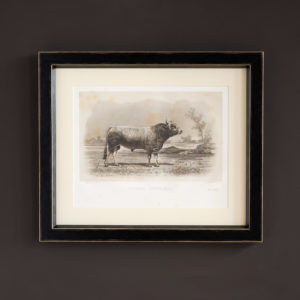
Original lithographs of Cattle Breeds published 1862, ‘Taureau Parthenais’,
£300 eachOriginal lithographs of Cattle Breeds published 1862, ‘Taureau Parthenais’,
Printed by Lemercier of Paris.£300 each -
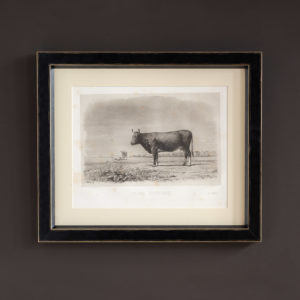
Original lithographs of Cattle Breeds published 1862, ‘Vache Bretonne’,
£300 eachOriginal lithographs of Cattle Breeds published 1862, ‘Vache Bretonne’,
Printed by Lemercier of Paris.£300 each -
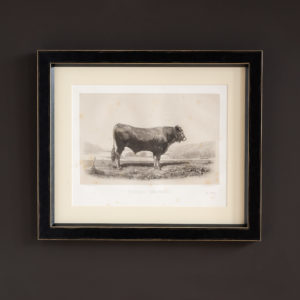
Original lithographs of Cattle Breeds published 1862, ‘Taureau Garonnais’,
£300 eachOriginal lithographs of Cattle Breeds published 1862, ‘Taureau Garonnais’,
Printed by Lemercier of Paris.£300 each -
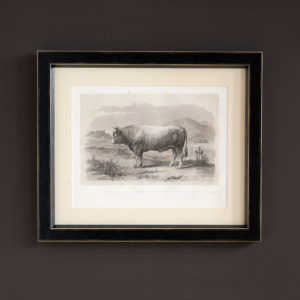
Original lithographs of Cattle Breeds published 1862, ‘Taureau Limousin’,
£300 eachOriginal lithographs of Cattle Breeds published 1862, ‘Taureau Limousin’,
Printed by Lemercier of Paris.£300 each -
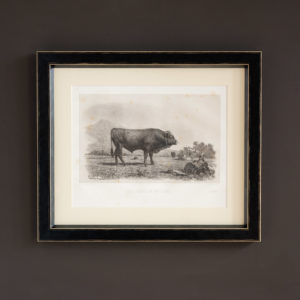
Original lithographs of Cattle Breeds published 1862, ‘Taureau D’Aubrac’,
£300 eachOriginal lithographs of Cattle Breeds published 1862, ‘Taureau D’Aubrac’,
Printed by Lemercier of Paris.£300 each -
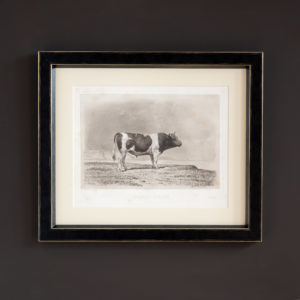
Original lithographs of Cattle Breeds published 1862, ‘Taureau Breton’,
£300 eachOriginal lithographs of Cattle Breeds published 1862, ‘Taureau Breton’,
Printed by Lemercier of Paris.£300 each -
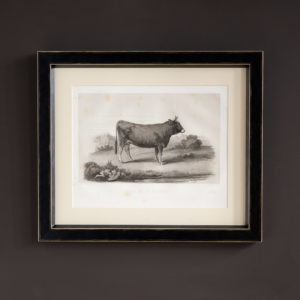
Original lithographs of Cattle Breeds published 1862, ‘Vache D’Aubrac’,
£300 eachOriginal lithographs of Cattle Breeds published 1862, ‘Vache D’Aubrac’,
Printed by Lemercier of Paris.£300 each -
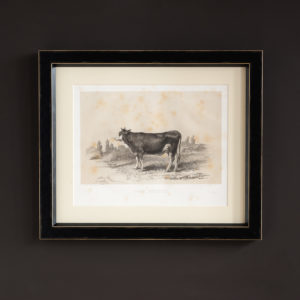
Original lithographs of Cattle Breeds published 1862, ‘Vache Mancelle’,
£300 eachOriginal lithographs of Cattle Breeds published 1862, ‘Vache Mancelle’,
Printed by Lemercier of Paris.£300 each -
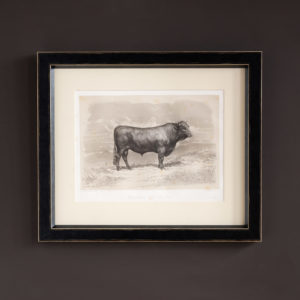
Original lithographs of Cattle Breeds published 1862, ‘Taureau de Salers’,
£300 eachOriginal lithographs of Cattle Breeds published 1862, ‘Taureau de Salers’,
Printed by Lemercier of Paris.£300 each -
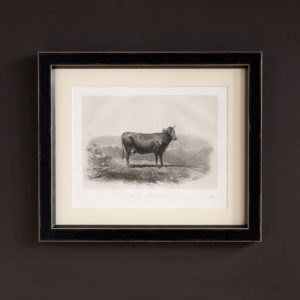
Original lithographs of Cattle Breeds published 1862, ‘Vache D’Oberhasli’,
£300 eachOriginal lithographs of Cattle Breeds published 1862, ‘Vache D’Oberhasli’,
Printed by Lemercier of Paris.£300 each -
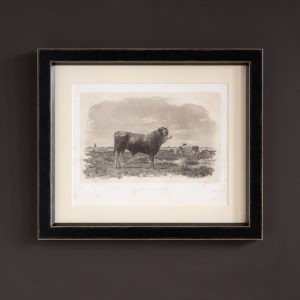
Original lithographs of Cattle Breeds published 1862, ‘Taureau Landais’,
£300 eachOriginal lithographs of Cattle Breeds published 1862, ‘Taureau Landais’,
Printed by Lemercier of Paris.£300 each -
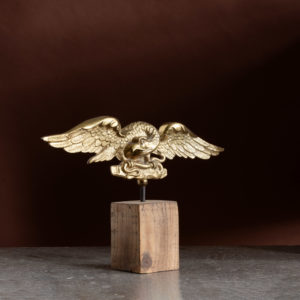
Early nineteenth century brass spread eagle,
£300Early nineteenth century brass spread eagle,
the well cast spread eagle perched upon a rocky outcrop with a snake in its talons. The eagle was possible from an Empire period standard, the eagle was an iconic symbol used during the Napoleonic period£300 -
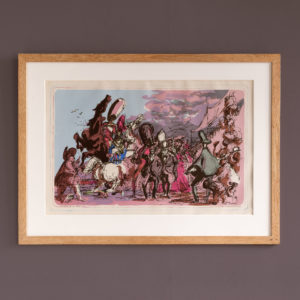
This England
£300This England
Framed and mounted, coloured lithograph by the Anglo-Polish draughtsman and expressionist painter Feliks Topolski showing Winston Churchill and Clement Atlee on The Mall. The work forms part of the post war Prints for Schools series. The purpose of Prints for Schools was to provide schools and other public institutions with examples of work by good artists at a low cost. The lithographs were all of uniform size so that they could be interchangeable in a single frame or group of frames to allow them to be rotated. The contributing artists were chosen by a committee chaired by the art historian Herbert Read.£300 -
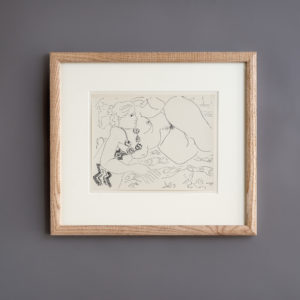
Cahiers D’Art, Dessins de Matisse
£300 eachCahiers D’Art, Dessins de Matisse
Cahiers d'Art is a French artistic and literary journal originally founded in 1926 by Christian Zervos, a Greek philosopher, editor. Born in 1889 in Argostoli on the Greek island of Cephalonia he was brought up in Alexandria, Egypt, finally moving to Paris in 1922. In 1924 Zervos joined the publishing firm Editions Morancé writing art articles for the magazine L'Art d'aujourd '. As an editor, he met many of the artists about whom the magazine wrote: Henri Matisse, Georges Braque, Ferdinand Léger, and Pablo Picasso. He left Morancé in 1926 to found his own journal Cahiers d'art becoming simultaneously publisher, director, model maker, chief editor and main editor. Each issue balanced primitive arts with the modern and contemporary arts and articles by art critics with more literary and poetic texts. According to Zervos, the interest in prehistoric, ancient and extra-European arts was necessary to get a glimpse of contemporary art. It was Zervos who took on the enormous task of documenting all the works of Pablo Picasso into a33-volume catalogue raisonnée, published between 1932 and 1978. One of his deepest wishes was to build up with Cahiers d’Art the visual archives of the artists he considered important. Zervos married Yvonne Marion who ran an art gallery, Galerie du Dragon, next to the location of her husband's shop, the rue Dragon on the left bank of Paris. Madame Zervos became an integral part of her husband's accomplishment and assembling their art collection. Initially published from 1926 to 1960 Cahiers d'Art still exists today after Swedish collector Staffan Ahrenberg purchased the publication and relaunched it in October 2012.£300 each -
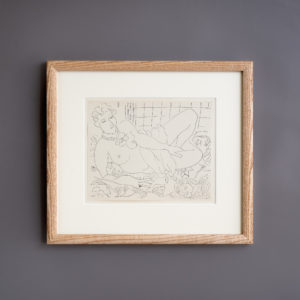
Cahiers D’Art, Dessins de Matisse
£300 eachCahiers D’Art, Dessins de Matisse
Cahiers d'Art is a French artistic and literary journal originally founded in 1926 by Christian Zervos, a Greek philosopher, editor. Born in 1889 in Argostoli on the Greek island of Cephalonia he was brought up in Alexandria, Egypt, finally moving to Paris in 1922. In 1924 Zervos joined the publishing firm Editions Morancé writing art articles for the magazine L'Art d'aujourd '. As an editor, he met many of the artists about whom the magazine wrote: Henri Matisse, Georges Braque, Ferdinand Léger, and Pablo Picasso. He left Morancé in 1926 to found his own journal Cahiers d'art becoming simultaneously publisher, director, model maker, chief editor and main editor. Each issue balanced primitive arts with the modern and contemporary arts and articles by art critics with more literary and poetic texts. According to Zervos, the interest in prehistoric, ancient and extra-European arts was necessary to get a glimpse of contemporary art. It was Zervos who took on the enormous task of documenting all the works of Pablo Picasso into a33-volume catalogue raisonnée, published between 1932 and 1978. One of his deepest wishes was to build up with Cahiers d’Art the visual archives of the artists he considered important. Zervos married Yvonne Marion who ran an art gallery, Galerie du Dragon, next to the location of her husband's shop, the rue Dragon on the left bank of Paris. Madame Zervos became an integral part of her husband's accomplishment and assembling their art collection. Initially published from 1926 to 1960 Cahiers d'Art still exists today after Swedish collector Staffan Ahrenberg purchased the publication and relaunched it in October 2012.£300 each -
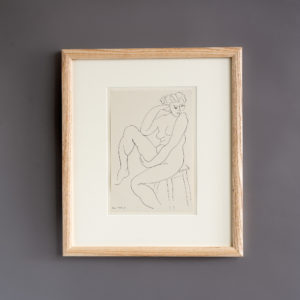
Cahiers D’Art, Dessins de Matisse
£300 eachCahiers D’Art, Dessins de Matisse
Cahiers d'Art is a French artistic and literary journal originally founded in 1926 by Christian Zervos, a Greek philosopher, editor. Born in 1889 in Argostoli on the Greek island of Cephalonia he was brought up in Alexandria, Egypt, finally moving to Paris in 1922. In 1924 Zervos joined the publishing firm Editions Morancé writing art articles for the magazine L'Art d'aujourd '. As an editor, he met many of the artists about whom the magazine wrote: Henri Matisse, Georges Braque, Ferdinand Léger, and Pablo Picasso. He left Morancé in 1926 to found his own journal Cahiers d'art becoming simultaneously publisher, director, model maker, chief editor and main editor. Each issue balanced primitive arts with the modern and contemporary arts and articles by art critics with more literary and poetic texts. According to Zervos, the interest in prehistoric, ancient and extra-European arts was necessary to get a glimpse of contemporary art. It was Zervos who took on the enormous task of documenting all the works of Pablo Picasso into a33-volume catalogue raisonnée, published between 1932 and 1978. One of his deepest wishes was to build up with Cahiers d’Art the visual archives of the artists he considered important. Zervos married Yvonne Marion who ran an art gallery, Galerie du Dragon, next to the location of her husband's shop, the rue Dragon on the left bank of Paris. Madame Zervos became an integral part of her husband's accomplishment and assembling their art collection. Initially published from 1926 to 1960 Cahiers d'Art still exists today after Swedish collector Staffan Ahrenberg purchased the publication and relaunched it in October 2012.£300 each -
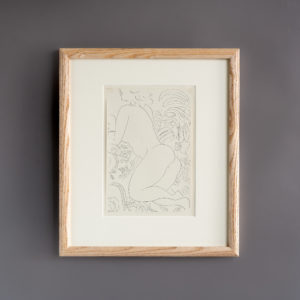
Cahiers D’Art, Dessins de Matisse
£300 eachCahiers D’Art, Dessins de Matisse
Cahiers d'Art is a French artistic and literary journal originally founded in 1926 by Christian Zervos, a Greek philosopher, editor. Born in 1889 in Argostoli on the Greek island of Cephalonia he was brought up in Alexandria, Egypt, finally moving to Paris in 1922. In 1924 Zervos joined the publishing firm Editions Morancé writing art articles for the magazine L'Art d'aujourd '. As an editor, he met many of the artists about whom the magazine wrote: Henri Matisse, Georges Braque, Ferdinand Léger, and Pablo Picasso. He left Morancé in 1926 to found his own journal Cahiers d'art becoming simultaneously publisher, director, model maker, chief editor and main editor. Each issue balanced primitive arts with the modern and contemporary arts and articles by art critics with more literary and poetic texts. According to Zervos, the interest in prehistoric, ancient and extra-European arts was necessary to get a glimpse of contemporary art. It was Zervos who took on the enormous task of documenting all the works of Pablo Picasso into a33-volume catalogue raisonnée, published between 1932 and 1978. One of his deepest wishes was to build up with Cahiers d’Art the visual archives of the artists he considered important. Zervos married Yvonne Marion who ran an art gallery, Galerie du Dragon, next to the location of her husband's shop, the rue Dragon on the left bank of Paris. Madame Zervos became an integral part of her husband's accomplishment and assembling their art collection. Initially published from 1926 to 1960 Cahiers d'Art still exists today after Swedish collector Staffan Ahrenberg purchased the publication and relaunched it in October 2012.£300 each -
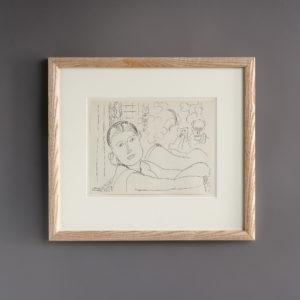
Cahiers D’Art, Dessins de Matisse
£300 eachCahiers D’Art, Dessins de Matisse
Cahiers d'Art is a French artistic and literary journal originally founded in 1926 by Christian Zervos, a Greek philosopher, editor. Born in 1889 in Argostoli on the Greek island of Cephalonia he was brought up in Alexandria, Egypt, finally moving to Paris in 1922. In 1924 Zervos joined the publishing firm Editions Morancé writing art articles for the magazine L'Art d'aujourd '. As an editor, he met many of the artists about whom the magazine wrote: Henri Matisse, Georges Braque, Ferdinand Léger, and Pablo Picasso. He left Morancé in 1926 to found his own journal Cahiers d'art becoming simultaneously publisher, director, model maker, chief editor and main editor. Each issue balanced primitive arts with the modern and contemporary arts and articles by art critics with more literary and poetic texts. According to Zervos, the interest in prehistoric, ancient and extra-European arts was necessary to get a glimpse of contemporary art. It was Zervos who took on the enormous task of documenting all the works of Pablo Picasso into a33-volume catalogue raisonnée, published between 1932 and 1978. One of his deepest wishes was to build up with Cahiers d’Art the visual archives of the artists he considered important. Zervos married Yvonne Marion who ran an art gallery, Galerie du Dragon, next to the location of her husband's shop, the rue Dragon on the left bank of Paris. Madame Zervos became an integral part of her husband's accomplishment and assembling their art collection. Initially published from 1926 to 1960 Cahiers d'Art still exists today after Swedish collector Staffan Ahrenberg purchased the publication and relaunched it in October 2012.£300 each -
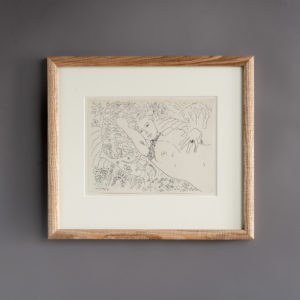
Cahiers D’Art, Dessins de Matisse
£300 eachCahiers D’Art, Dessins de Matisse
Cahiers d'Art is a French artistic and literary journal originally founded in 1926 by Christian Zervos, a Greek philosopher, editor. Born in 1889 in Argostoli on the Greek island of Cephalonia he was brought up in Alexandria, Egypt, finally moving to Paris in 1922. In 1924 Zervos joined the publishing firm Editions Morancé writing art articles for the magazine L'Art d'aujourd '. As an editor, he met many of the artists about whom the magazine wrote: Henri Matisse, Georges Braque, Ferdinand Léger, and Pablo Picasso. He left Morancé in 1926 to found his own journal Cahiers d'art becoming simultaneously publisher, director, model maker, chief editor and main editor. Each issue balanced primitive arts with the modern and contemporary arts and articles by art critics with more literary and poetic texts. According to Zervos, the interest in prehistoric, ancient and extra-European arts was necessary to get a glimpse of contemporary art. It was Zervos who took on the enormous task of documenting all the works of Pablo Picasso into a33-volume catalogue raisonnée, published between 1932 and 1978. One of his deepest wishes was to build up with Cahiers d’Art the visual archives of the artists he considered important. Zervos married Yvonne Marion who ran an art gallery, Galerie du Dragon, next to the location of her husband's shop, the rue Dragon on the left bank of Paris. Madame Zervos became an integral part of her husband's accomplishment and assembling their art collection. Initially published from 1926 to 1960 Cahiers d'Art still exists today after Swedish collector Staffan Ahrenberg purchased the publication and relaunched it in October 2012.£300 each -
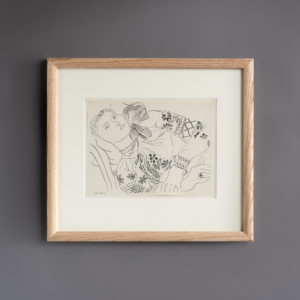
Cahiers D’Art, Dessins de Matisse
£300 eachCahiers D’Art, Dessins de Matisse
Cahiers d'Art is a French artistic and literary journal originally founded in 1926 by Christian Zervos, a Greek philosopher, editor. Born in 1889 in Argostoli on the Greek island of Cephalonia he was brought up in Alexandria, Egypt, finally moving to Paris in 1922. In 1924 Zervos joined the publishing firm Editions Morancé writing art articles for the magazine L'Art d'aujourd '. As an editor, he met many of the artists about whom the magazine wrote: Henri Matisse, Georges Braque, Ferdinand Léger, and Pablo Picasso. He left Morancé in 1926 to found his own journal Cahiers d'art becoming simultaneously publisher, director, model maker, chief editor and main editor. Each issue balanced primitive arts with the modern and contemporary arts and articles by art critics with more literary and poetic texts. According to Zervos, the interest in prehistoric, ancient and extra-European arts was necessary to get a glimpse of contemporary art. It was Zervos who took on the enormous task of documenting all the works of Pablo Picasso into a33-volume catalogue raisonnée, published between 1932 and 1978. One of his deepest wishes was to build up with Cahiers d’Art the visual archives of the artists he considered important. Zervos married Yvonne Marion who ran an art gallery, Galerie du Dragon, next to the location of her husband's shop, the rue Dragon on the left bank of Paris. Madame Zervos became an integral part of her husband's accomplishment and assembling their art collection. Initially published from 1926 to 1960 Cahiers d'Art still exists today after Swedish collector Staffan Ahrenberg purchased the publication and relaunched it in October 2012.£300 each -
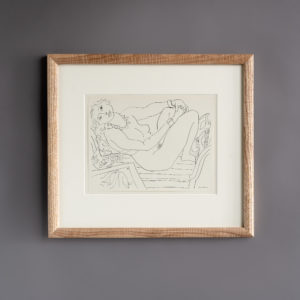
Cahiers D’Art, Dessins de Matisse
£300 eachCahiers D’Art, Dessins de Matisse
Cahiers d'Art is a French artistic and literary journal originally founded in 1926 by Christian Zervos, a Greek philosopher, editor. Born in 1889 in Argostoli on the Greek island of Cephalonia he was brought up in Alexandria, Egypt, finally moving to Paris in 1922. In 1924 Zervos joined the publishing firm Editions Morancé writing art articles for the magazine L'Art d'aujourd '. As an editor, he met many of the artists about whom the magazine wrote: Henri Matisse, Georges Braque, Ferdinand Léger, and Pablo Picasso. He left Morancé in 1926 to found his own journal Cahiers d'art becoming simultaneously publisher, director, model maker, chief editor and main editor. Each issue balanced primitive arts with the modern and contemporary arts and articles by art critics with more literary and poetic texts. According to Zervos, the interest in prehistoric, ancient and extra-European arts was necessary to get a glimpse of contemporary art. It was Zervos who took on the enormous task of documenting all the works of Pablo Picasso into a33-volume catalogue raisonnée, published between 1932 and 1978. One of his deepest wishes was to build up with Cahiers d’Art the visual archives of the artists he considered important. Zervos married Yvonne Marion who ran an art gallery, Galerie du Dragon, next to the location of her husband's shop, the rue Dragon on the left bank of Paris. Madame Zervos became an integral part of her husband's accomplishment and assembling their art collection. Initially published from 1926 to 1960 Cahiers d'Art still exists today after Swedish collector Staffan Ahrenberg purchased the publication and relaunched it in October 2012.£300 each -
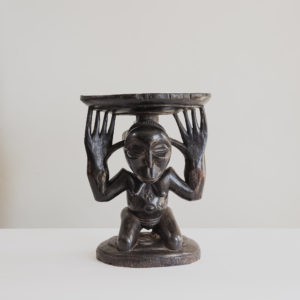
Luba stool,
£300Luba stool,
Luba art relates most commonly to the Kings and Chiefs of the Congolese Luba tribe, who would assert their power by display of ceremonial objects during ceremonies. Stools were considered to be the most important of these objects as they would serve not only as a seat but as a receptacle for the Chief’s spirit. The ruler is thus figuratively and literally supported by a caryatid figure - in this case a kneeling female ancestor with elongated and outstretched fingertips. The deep and patterned carvings seen on her stomach allude to the maternal - such markings were common among many matrilineal societies in Africa to emphasise and protect the navel as the threshold between oneself, one’s mother and one’s own lineage.£300 -
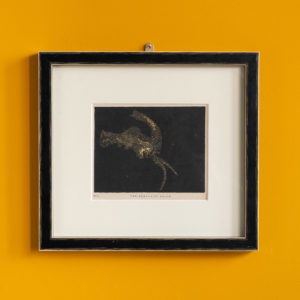
“The Beauty of the Heavens: A Pictorial Display of The Astronomical Phenomena of The Universe” by Charles Blunt, ‘The Nebula of Orion’,
£295 each“The Beauty of the Heavens: A Pictorial Display of The Astronomical Phenomena of The Universe” by Charles Blunt, ‘The Nebula of Orion’,
In the mid-19th century, Home Education had become very popular for the masses and lecturer, Charles Blunt seeing a gap in the market came up with these illustrations. Blunt who specialised in astronomy and natural philosophy, saw the need for a series of ‘accurate yet popular’ plates illustrating the known Universe. These hand-finished aquatints prints were based on Blunt’s own drawings, depicting celestial and astrological subjects.£295 each -
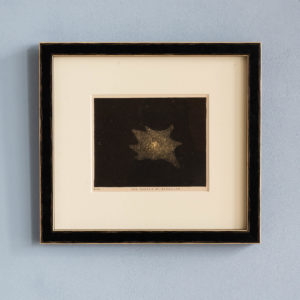
“The Beauty of the Heavens: A Pictorial Display of The Astronomical Phenomena of The Universe” by Charles Blunt, ‘The Nebula of Hercules’,
£295 each“The Beauty of the Heavens: A Pictorial Display of The Astronomical Phenomena of The Universe” by Charles Blunt, ‘The Nebula of Hercules’,
In the mid-19th century, Home Education had become very popular for the masses and lecturer, Charles Blunt seeing a gap in the market came up with these illustrations. Blunt who specialised in astronomy and natural philosophy, saw the need for a series of ‘accurate yet popular’ plates illustrating the known Universe. These hand-finished aquatints prints were based on Blunt’s own drawings, depicting celestial and astrological subjects.£295 each -
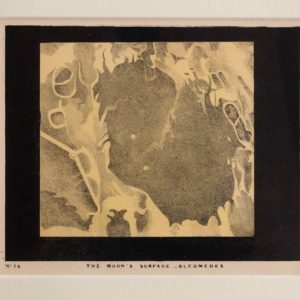
“The Beauty of the Heavens: A Pictorial Display of The Astronomical Phenomena of The Universe” by Charles Blunt, ‘The Moon’s Surface – Cleomedes’,
£295 each“The Beauty of the Heavens: A Pictorial Display of The Astronomical Phenomena of The Universe” by Charles Blunt, ‘The Moon’s Surface – Cleomedes’,
In the mid-19th century, Home Education had become very popular for the masses and lecturer, Charles Blunt seeing a gap in the market came up with these illustrations. Blunt who specialised in astronomy and natural philosophy, saw the need for a series of ‘accurate yet popular’ plates illustrating the known Universe. These hand-finished aquatints prints were based on Blunt’s own drawings, depicting celestial and astrological subjects.£295 each -
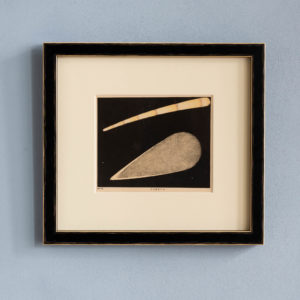
“The Beauty of the Heavens: A Pictorial Display of The Astronomical Phenomena of The Universe” by Charles Blunt, ‘Comets’,
£295 each“The Beauty of the Heavens: A Pictorial Display of The Astronomical Phenomena of The Universe” by Charles Blunt, ‘Comets’,
In the mid-19th century, Home Education had become very popular for the masses and lecturer, Charles Blunt seeing a gap in the market came up with these illustrations. Blunt who specialised in astronomy and natural philosophy, saw the need for a series of ‘accurate yet popular’ plates illustrating the known Universe. These hand-finished aquatints prints were based on Blunt’s own drawings, depicting celestial and astrological subjects.£295 each -
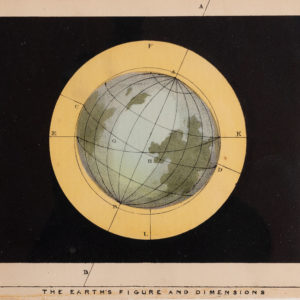
“The Beauty of the Heavens: A Pictorial Display of The Astronomical Phenomena of The Universe” by Charles Blunt, ‘The Earth’s Figure and Dimensions’,
£295 each“The Beauty of the Heavens: A Pictorial Display of The Astronomical Phenomena of The Universe” by Charles Blunt, ‘The Earth’s Figure and Dimensions’,
In the mid-19th century, Home Education had become very popular for the masses and lecturer, Charles Blunt seeing a gap in the market came up with these illustrations. Blunt who specialised in astronomy and natural philosophy, saw the need for a series of ‘accurate yet popular’ plates illustrating the known Universe. These hand-finished aquatints prints were based on Blunt’s own drawings, depicting celestial and astrological subjects.£295 each -
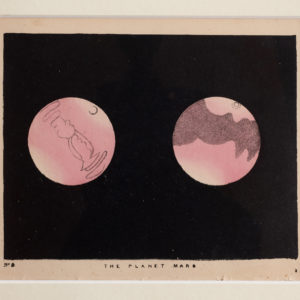
“The Beauty of the Heavens: A Pictorial Display of The Astronomical Phenomena of The Universe” by Charles Blunt, ‘The Planet Mars’,
£295 each“The Beauty of the Heavens: A Pictorial Display of The Astronomical Phenomena of The Universe” by Charles Blunt, ‘The Planet Mars’,
In the mid-19th century, Home Education had become very popular for the masses and lecturer, Charles Blunt seeing a gap in the market came up with these illustrations. Blunt who specialised in astronomy and natural philosophy, saw the need for a series of ‘accurate yet popular’ plates illustrating the known Universe. These hand-finished aquatints prints were based on Blunt’s own drawings, depicting celestial and astrological subjects.£295 each -
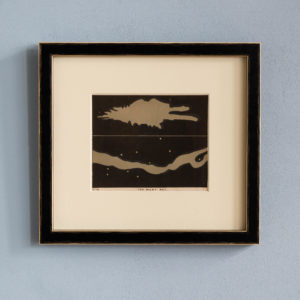
“The Beauty of the Heavens: A Pictorial Display of The Astronomical Phenomena of The Universe” by Charles Blunt, ‘The Milky Way’,
£295 each“The Beauty of the Heavens: A Pictorial Display of The Astronomical Phenomena of The Universe” by Charles Blunt, ‘The Milky Way’,
In the mid-19th century, Home Education had become very popular for the masses and lecturer, Charles Blunt seeing a gap in the market came up with these illustrations. Blunt who specialised in astronomy and natural philosophy, saw the need for a series of ‘accurate yet popular’ plates illustrating the known Universe. These hand-finished aquatints prints were based on Blunt’s own drawings, depicting celestial and astrological subjects.£295 each -
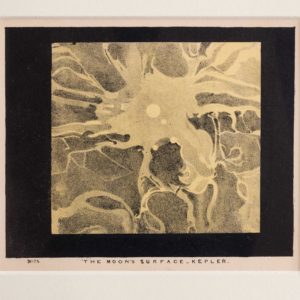
“The Beauty of the Heavens: A Pictorial Display of The Astronomical Phenomena of The Universe” by Charles Blunt, ‘The Moon’s Surface – Kepler’,
£295 each“The Beauty of the Heavens: A Pictorial Display of The Astronomical Phenomena of The Universe” by Charles Blunt, ‘The Moon’s Surface – Kepler’,
In the mid-19th century, Home Education had become very popular for the masses and lecturer, Charles Blunt seeing a gap in the market came up with these illustrations. Blunt who specialised in astronomy and natural philosophy, saw the need for a series of ‘accurate yet popular’ plates illustrating the known Universe. These hand-finished aquatints prints were based on Blunt’s own drawings, depicting celestial and astrological subjects.£295 each -
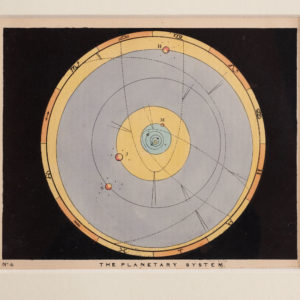
“The Beauty of the Heavens: A Pictorial Display of The Astronomical Phenomena of The Universe” by Charles Blunt, ‘The Planetary System’,
£295 each“The Beauty of the Heavens: A Pictorial Display of The Astronomical Phenomena of The Universe” by Charles Blunt, ‘The Planetary System’,
In the mid-19th century, Home Education had become very popular for the masses and lecturer, Charles Blunt seeing a gap in the market came up with these illustrations. Blunt who specialised in astronomy and natural philosophy, saw the need for a series of ‘accurate yet popular’ plates illustrating the known Universe. These hand-finished aquatints prints were based on Blunt’s own drawings, depicting celestial and astrological subjects.£295 each -
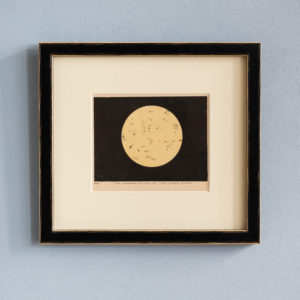
“The Beauty of the Heavens: A Pictorial Display of The Astronomical Phenomena of The Universe” by Charles Blunt, ‘The Nomenclature of the Lunar Spots’,
£295 each“The Beauty of the Heavens: A Pictorial Display of The Astronomical Phenomena of The Universe” by Charles Blunt, ‘The Nomenclature of the Lunar Spots’,
In the mid-19th century, Home Education had become very popular for the masses and lecturer, Charles Blunt seeing a gap in the market came up with these illustrations. Blunt who specialised in astronomy and natural philosophy, saw the need for a series of ‘accurate yet popular’ plates illustrating the known Universe. These hand-finished aquatints prints were based on Blunt’s own drawings, depicting celestial and astrological subjects.£295 each -
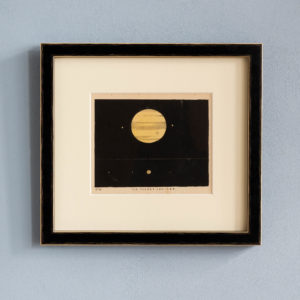
“The Beauty of the Heavens: A Pictorial Display of The Astronomical Phenomena of The Universe” by Charles Blunt, ‘The Planet Jupiter’,
£295 each“The Beauty of the Heavens: A Pictorial Display of The Astronomical Phenomena of The Universe” by Charles Blunt, ‘The Planet Jupiter’,
In the mid-19th century, Home Education had become very popular for the masses and lecturer, Charles Blunt seeing a gap in the market came up with these illustrations. Blunt who specialised in astronomy and natural philosophy, saw the need for a series of ‘accurate yet popular’ plates illustrating the known Universe. These hand-finished aquatints prints were based on Blunt’s own drawings, depicting celestial and astrological subjects.£295 each -
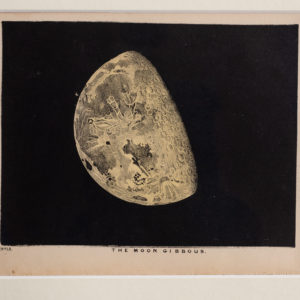
“The Beauty of the Heavens: A Pictorial Display of The Astronomical Phenomena of The Universe” by Charles Blunt, ‘The Moon Gibbous’,
£295 each“The Beauty of the Heavens: A Pictorial Display of The Astronomical Phenomena of The Universe” by Charles Blunt, ‘The Moon Gibbous’,
In the mid-19th century, Home Education had become very popular for the masses and lecturer, Charles Blunt seeing a gap in the market came up with these illustrations. Blunt who specialised in astronomy and natural philosophy, saw the need for a series of ‘accurate yet popular’ plates illustrating the known Universe. These hand-finished aquatints prints were based on Blunt’s own drawings, depicting celestial and astrological subjects.£295 each -
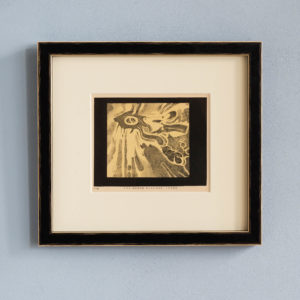
“The Beauty of the Heavens: A Pictorial Display of The Astronomical Phenomena of The Universe” by Charles Blunt, ‘The Moon’s Surface – Tycho’,
£295 each“The Beauty of the Heavens: A Pictorial Display of The Astronomical Phenomena of The Universe” by Charles Blunt, ‘The Moon’s Surface – Tycho’,
In the mid-19th century, Home Education had become very popular for the masses and lecturer, Charles Blunt seeing a gap in the market came up with these illustrations. Blunt who specialised in astronomy and natural philosophy, saw the need for a series of ‘accurate yet popular’ plates illustrating the known Universe. These hand-finished aquatints prints were based on Blunt’s own drawings, depicting celestial and astrological subjects.£295 each -
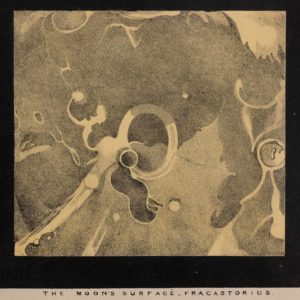
“The Beauty of the Heavens: A Pictorial Display of The Astronomical Phenomena of The Universe” by Charles Blunt, ‘The Moon’s Surface’,
£295 each“The Beauty of the Heavens: A Pictorial Display of The Astronomical Phenomena of The Universe” by Charles Blunt, ‘The Moon’s Surface’,
In the mid-19th century, Home Education had become very popular for the masses and lecturer, Charles Blunt seeing a gap in the market came up with these illustrations. Blunt who specialised in astronomy and natural philosophy, saw the need for a series of ‘accurate yet popular’ plates illustrating the known Universe. These hand-finished aquatints prints were based on Blunt’s own drawings, depicting celestial and astrological subjects.£295 each -
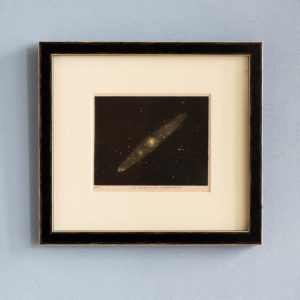
“The Beauty of the Heavens: A Pictorial Display of The Astronomical Phenomena of The Universe” by Charles Blunt, ‘The Nebula of Andromeda’,
£295 each“The Beauty of the Heavens: A Pictorial Display of The Astronomical Phenomena of The Universe” by Charles Blunt, ‘The Nebula of Andromeda’,
In the mid-19th century, Home Education had become very popular for the masses and lecturer, Charles Blunt seeing a gap in the market came up with these illustrations. Blunt who specialised in astronomy and natural philosophy, saw the need for a series of ‘accurate yet popular’ plates illustrating the known Universe. These hand-finished aquatints prints were based on Blunt’s own drawings, depicting celestial and astrological subjects.£295 each -
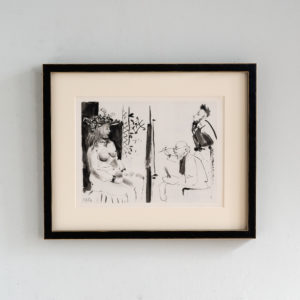
Picasso, Verve 1954
£295Picasso, Verve 1954
Original héliogravure print from Verve Vol. VIII, No 29/30 printed by the Master Printers Draeger Frères in 1954. Framed in black with a cream mount.£295 -
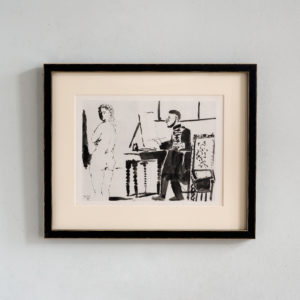
Picasso, Verve 1954
£295Picasso, Verve 1954
Original héliogravure print from Verve Vol. VIII, No 29/30 printed by the Master Printers Draeger Frères in 1954. Framed in black with a cream mount.£295 -
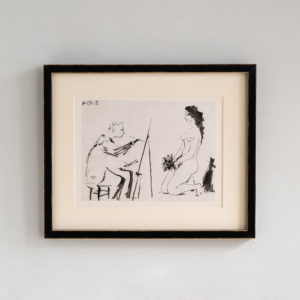
Picasso, Verve 1954
£295Picasso, Verve 1954
Original héliogravure print from Verve Vol. VIII, No 29/30 printed by the Master Printers Draeger Frères in 1954. Framed in black with a cream mount.£295 -
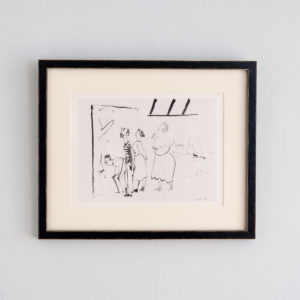
Picasso, Verve 1954
£295Picasso, Verve 1954
Original héliogravure print from Verve Vol. VIII, No 29/30 printed by the Master Printers Draeger Frères in 1954. Framed in black with a cream mount.£295 -
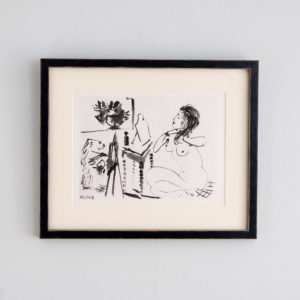
Picasso, Verve 1954
£295Picasso, Verve 1954
Original héliogravure print from Verve Vol. VIII, No 29/30 printed by the Master Printers Draeger Frères in 1954. Framed in black with a cream mount.£295 -
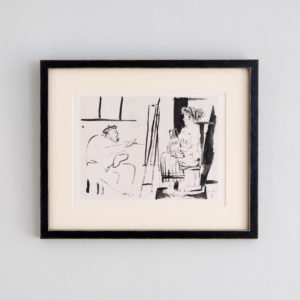
Picasso, Verve 1954
£295Picasso, Verve 1954
Original héliogravure print from Verve Vol. VIII, No 29/30 printed by the Master Printers Draeger Frères in 1954. Framed in black with a cream mount.£295 -
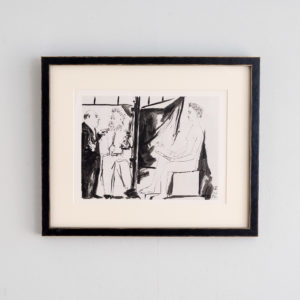
Picasso, Verve 1954
£295Picasso, Verve 1954
Original héliogravure print from Verve Vol. VIII, No 29/30 printed by the Master Printers Draeger Frères in 1954. Framed in black with a cream mount.£295 -
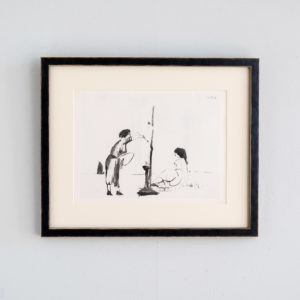
Picasso, Verve 1954
£295Picasso, Verve 1954
Original heliograuvre print from Verve Vol. VIII, No 29/30 printed by the Master Printers Draeger Frères in 1954. Framed in black with a cream mount.£295 -
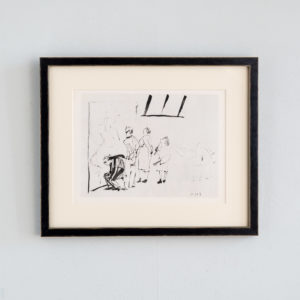
Picasso, Verve 1954
£295Picasso, Verve 1954
Original héliogravure print from Verve Vol. VIII, No 29/30 printed by the Master Printers Draeger Frères in 1954. Framed in black with a cream mount.£295 -
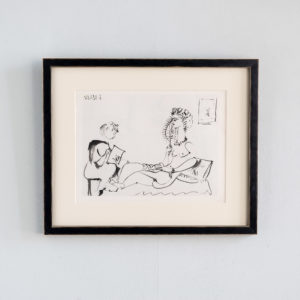
Picasso, Verve 1954
£295Picasso, Verve 1954
Original héliogravure print from Verve Vol. VIII, No 29/30 printed by the Master Printers Draeger Frères in 1954. Framed in black with a cream mount.£295 -
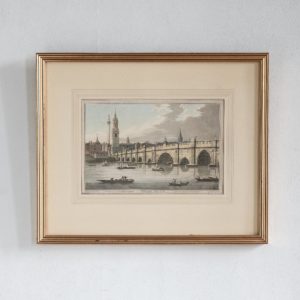
London Bridge
£295 -
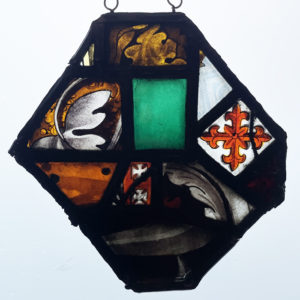
An English leaded stained glass hanger,
£290An English leaded stained glass hanger,
a polygonal light incorporating old fragments (some probably medieval): with Maltese crosses and foliate fragments, chain hung from wire loops,£290 -
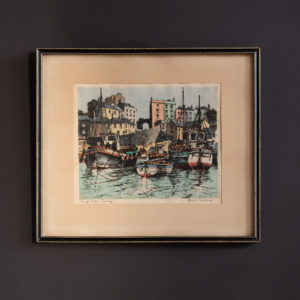
High Tide, Tenby.
£280High Tide, Tenby.
A framed aquatint by the English painter and printmaker James Priddey FRSA showing a group of small boats and fishing craft huddled beside the sea wall of Tenby harbour on the Pembrokeshire coast.£280 -
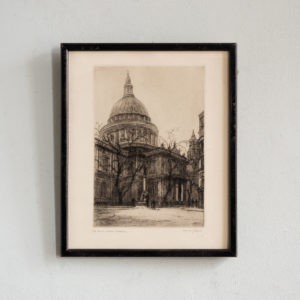
St. Pauls from Cheapside
£280St. Pauls from Cheapside
A framed pencil drawing by Dorothy Sweet showing the northern transept and part of the north quire aisle of St Pauls over St Pauls Churchyard, viewed from the the junction of Cheapside and Paternoster Row. Signed by the artist in pencil.£280 -
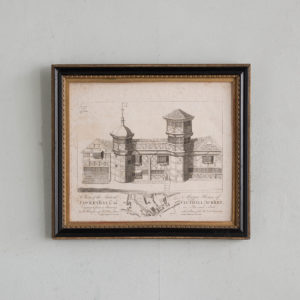
View of the Antient Manor House of Fawkeshall
£280View of the Antient Manor House of Fawkeshall
Historical engraving featuring a map of the area. Presented in a Hogarth pattern frame.£280 -

Songye Luba mask (A)
£280Songye Luba mask (A)
The people of Songye are mainly known as a farming community, however they also take part in hunting and trading with other neighbouring communities. The distinct Songye style is easily recognisable in the Kifwebe mask by the mass of closely carved lines and bold shapes such as the protruding sagittal crest and X carved mouth. The intertwining of the red, black, and white colouring in these masks are said to symbolise the struggle between good (white) and evil (black and red) - the combination of these colours embodying the positive and dangerous force held within the mask. The ruggedness of the Kifwebe mask and its long raffia beard are said to symbolise the underworld and the spirits that escape from it. Further, it is believed that the sagittal crest and conical protrusion contain the magical strength of the mask.£280 -
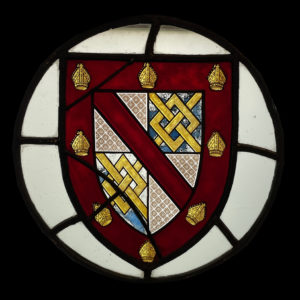
An armorial leaded and stained glass hanger,
£275An armorial leaded and stained glass hanger,
the round pane, a shield device within, the quartered field with gold 'frets' on worn blue background, gold Bishops' mitres to the red border, facing lead restorations, wire eye to the top for hanging,£275 -
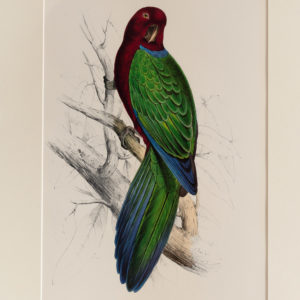
Parrots by Edward Lear – Tabuan Parrakeet,
£275Parrots by Edward Lear – Tabuan Parrakeet,
Edward Lear began his career as a zoological illustrator, working in the Parrot House at London Zoo. This resulted in the publication of Illustrations of the family of Psittacidae, or parrots, the greater part of them species hitherto unfigured in 1832. The first plates for the book were issued in 1830 when he was still only 18.£275 -
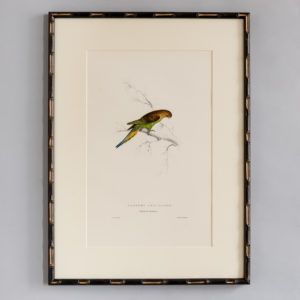
Parrots by Edward Lear – Undulated Parrakeet,
£275Parrots by Edward Lear – Undulated Parrakeet,
Edward Lear began his career as a zoological illustrator, working in the Parrot House at London Zoo. This resulted in the publication of Illustrations of the family of Psittacidae, or parrots, the greater part of them species hitherto unfigured in 1832. The first plates for the book were issued in 1830 when he was still only 18.£275 -
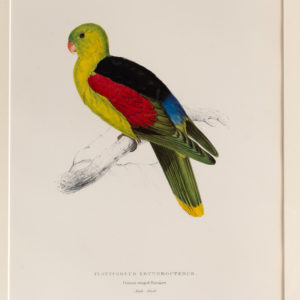
Parrots by Edward Lear – Crimson-winged Parrakeet,
£275Parrots by Edward Lear – Crimson-winged Parrakeet,
Edward Lear began his career as a zoological illustrator, working in the Parrot House at London Zoo. This resulted in the publication of Illustrations of the family of Psittacidae, or parrots, the greater part of them species hitherto unfigured in 1832. The first plates for the book were issued in 1830 when he was still only 18.£275 -
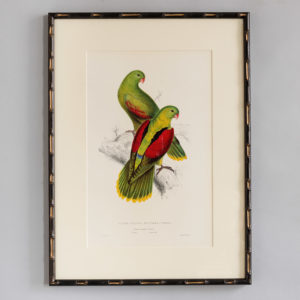
Parrots by Edward Lear – Crimson-winged Parrakeet,
£275Parrots by Edward Lear – Crimson-winged Parrakeet,
Edward Lear began his career as a zoological illustrator, working in the Parrot House at London Zoo. This resulted in the publication of Illustrations of the family of Psittacidae, or parrots, the greater part of them species hitherto unfigured in 1832. The first plates for the book were issued in 1830 when he was still only 18.£275 -
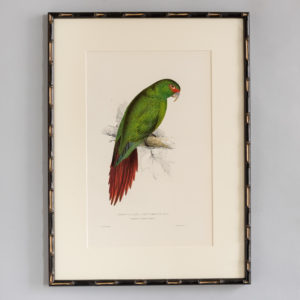
Parrots by Edward Lear – Long-billed Parrakeet-Maccaw,
£275Parrots by Edward Lear – Long-billed Parrakeet-Maccaw,
Edward Lear began his career as a zoological illustrator, working in the Parrot House at London Zoo. This resulted in the publication of Illustrations of the family of Psittacidae, or parrots, the greater part of them species hitherto unfigured in 1832. The first plates for the book were issued in 1830 when he was still only 18.£275 -
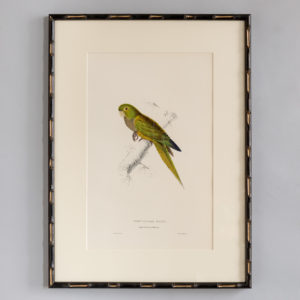
Parrots by Edward Lear – Dwarf Parrakeet Maccaw,
£275Parrots by Edward Lear – Dwarf Parrakeet Maccaw,
Edward Lear began his career as a zoological illustrator, working in the Parrot House at London Zoo. This resulted in the publication of Illustrations of the family of Psittacidae, or parrots, the greater part of them species hitherto unfigured in 1832. The first plates for the book were issued in 1830 when he was still only 18.£275 -
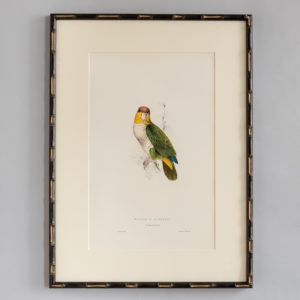
Parrots by Edward Lear – Bay-headed Parrot,
£275Parrots by Edward Lear – Bay-headed Parrot,
Edward Lear began his career as a zoological illustrator, working in the Parrot House at London Zoo. This resulted in the publication of Illustrations of the family of Psittacidae, or parrots, the greater part of them species hitherto unfigured in 1832. The first plates for the book were issued in 1830 when he was still only 18.£275 -
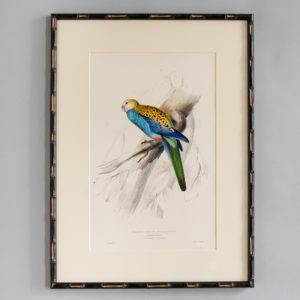
Parrots by Edward Lear – Paleheaded Parrakeet,
£275Parrots by Edward Lear – Paleheaded Parrakeet,
Edward Lear began his career as a zoological illustrator, working in the Parrot House at London Zoo. This resulted in the publication of Illustrations of the family of Psittacidae, or parrots, the greater part of them species hitherto unfigured in 1832. The first plates for the book were issued in 1830 when he was still only 18.£275 -
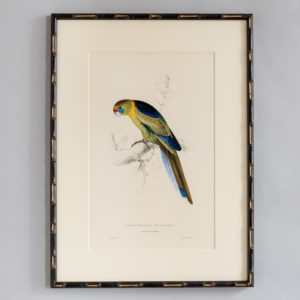
Parrots by Edward Lear – Barnard’s Parrakeet,
£275Parrots by Edward Lear – Barnard’s Parrakeet,
Edward Lear began his career as a zoological illustrator, working in the Parrot House at London Zoo. This resulted in the publication of Illustrations of the family of Psittacidae, or parrots, the greater part of them species hitherto unfigured in 1832. The first plates for the book were issued in 1830 when he was still only 18.£275 -
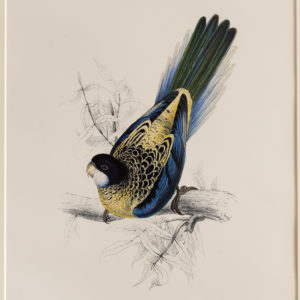
Parrots by Edward Lear – Brown’s Parrakeet,
£275Parrots by Edward Lear – Brown’s Parrakeet,
Edward Lear began his career as a zoological illustrator, working in the Parrot House at London Zoo. This resulted in the publication of Illustrations of the family of Psittacidae, or parrots, the greater part of them species hitherto unfigured in 1832. The first plates for the book were issued in 1830 when he was still only 18.£275 -
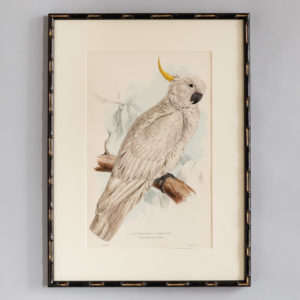
Parrots by Edward Lear – Greater Sulphur-crested Cockatoo,
£275Parrots by Edward Lear – Greater Sulphur-crested Cockatoo,
Edward Lear began his career as a zoological illustrator, working in the Parrot House at London Zoo. This resulted in the publication of Illustrations of the family of Psittacidae, or parrots, the greater part of them species hitherto unfigured in 1832. The first plates for the book were issued in 1830 when he was still only 18.£275 -
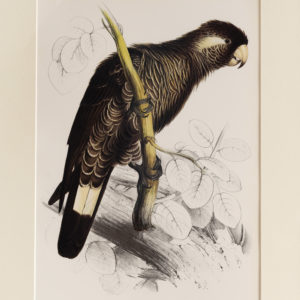
Parrots by Edward Lear – Baudin’s Cockatoo
£275Parrots by Edward Lear – Baudin’s Cockatoo
Edward Lear began his career as a zoological illustrator, working in the Parrot House at London Zoo. This resulted in the publication of Illustrations of the family of Psittacidae, or parrots, the greater part of them species hitherto unfigured in 1832. The first plates for the book were issued in 1830 when he was still only 18.£275 -
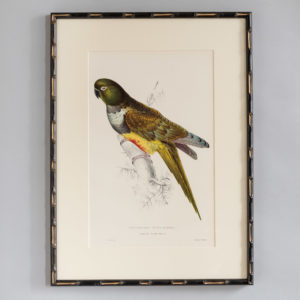
Parrots by Edward Lear – Patagonian Parrakeet-Maccaw
£275Parrots by Edward Lear – Patagonian Parrakeet-Maccaw
Edward Lear began his career as a zoological illustrator, working in the Parrot House at London Zoo. This resulted in the publication of Illustrations of the family of Psittacidae, or parrots, the greater part of them species hitherto unfigured in 1832. The first plates for the book were issued in 1830 when he was still only 18.£275 -
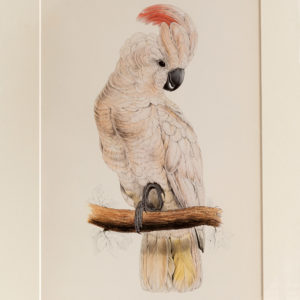
Parrots by Edward Lear – Salmon-crested Cockatoo
£275Parrots by Edward Lear – Salmon-crested Cockatoo
Edward Lear began his career as a zoological illustrator, working in the Parrot House at London Zoo. This resulted in the publication of Illustrations of the family of Psittacidae, or parrots, the greater part of them species hitherto unfigured in 1832. The first plates for the book were issued in 1830 when he was still only 18.£275 -
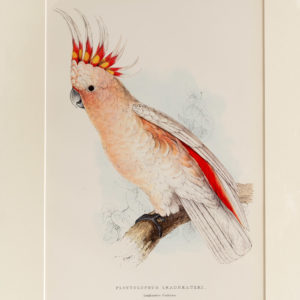
Parrots by Edward Lear – Leadbeater’s Cockatoo,
£275Parrots by Edward Lear – Leadbeater’s Cockatoo,
Edward Lear began his career as a zoological illustrator, working in the Parrot House at London Zoo. This resulted in the publication of Illustrations of the family of Psittacidae, or parrots, the greater part of them species hitherto unfigured in 1832. The first plates for the book were issued in 1830 when he was still only 18.£275 -
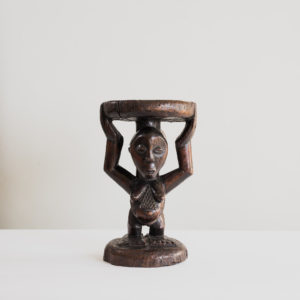
Luba stool
£275Luba stool
Luba art relates most commonly to the Kings and Chiefs of the Congolese Luba tribe, who would assert their power by display of ceremonial objects during ceremonies. Stools were considered to be the most important of these objects as they would serve not only as a seat but as a receptacle for the Chief’s spirit. The ruler is thus figuratively and literally supported by a caryatid figure - in this case a posed female ancestor with a carved headdress. The deep and patterned carvings seen on her stomach allude to the maternal - such markings were common among many matrilineal societies in Africa to emphasise and protect the navel as the threshold between oneself, one’s mother and one’s own lineage. The act of scarification will have often been used as a rite of passage, in order to symbolise a readiness for the pain of childbirth.£275 -
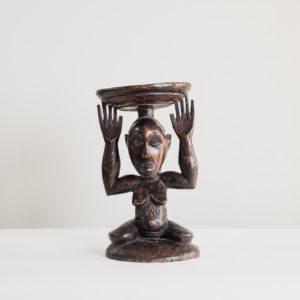
Tabwa stool
£275Tabwa stool
Congolese Tabwa art has distinct similarities to that of the Luba tribe, and its stools are used also in ceremonies by the Kings and Chiefs of the community with a means of establishing power and authority. The key difference seen between the two is the Tabwa’s traditional depiction of braided hair as a carved extension of the head and checkerboard-style scarification of the woman’s body. Such markings were common among many matrilineal societies in Africa to emphasise and protect the navel as the threshold between oneself, one’s mother and one’s own lineage.£275
Featured Items
-

The Dance, by Henri Matisse, Jan – March 1939 / No. 4.
£1,200The Dance, by Henri Matisse, Jan – March 1939 / No. 4.
The Verve Review was a purposefully luxurious. It ran from 1937 to 1960, but with only 38 editions available, due to the high degree of design and editorial work dedicated to each issue. Each edition contained unique lithographic prints, commissioned by the editor, and each cover a double-page lithograph elaborated by one of the artists contained within. It was the brainchild of its editor Stratis Eleftheriades, a Greek National who moved to Paris in the early thirties to take part in the growing Modernist movement, writing under the name of Teriade.£1,200 -
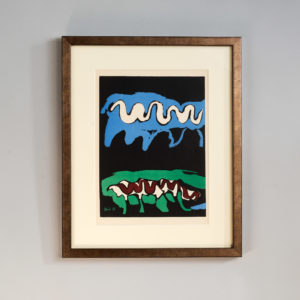
The Four Elements, Earth by Francisco Bores, Verve Vol. 1 / No. 1.
£600The Four Elements, Earth by Francisco Bores, Verve Vol. 1 / No. 1.
The Verve Review was a purposefully luxurious. It ran from 1937 to 1960, but with only 38 editions available, due to the high degree of design and editorial work dedicated to each issue. Each edition contained unique lithographic prints, commissioned by the editor, and each cover a double-page lithograph elaborated by one of the artists contained within. It was the brainchild of its editor Stratis Eleftheriades, a Greek National who moved to Paris in the early thirties to take part in the growing Modernist movement, writing under the name of Teriade.£600 -
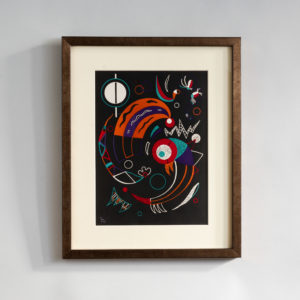
Comets by Wassily Kandinsky, Verve Vol. 1 / No. 2.
£800Comets by Wassily Kandinsky, Verve Vol. 1 / No. 2.
The Verve Review was a purposefully luxurious. It ran from 1937 to 1960, but with only 38 editions available, due to the high degree of design and editorial work dedicated to each issue. Each edition contained unique lithographic prints, commissioned by the editor, and each cover a double-page lithograph elaborated by one of the artists contained within. It was the brainchild of its editor Stratis Eleftheriades, a Greek National who moved to Paris in the early thirties to take part in the growing Modernist movement, writing under the name of Teriade.£800 -
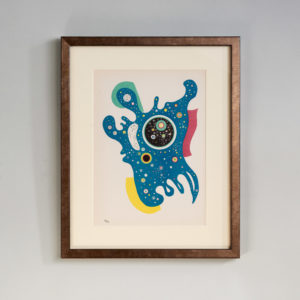
Stars by Wassily Kandinsky, Verve Vol. 1 / No. 2.
£800Stars by Wassily Kandinsky, Verve Vol. 1 / No. 2.
The Verve Review was a purposefully luxurious. It ran from 1937 to 1960, but with only 38 editions available, due to the high degree of design and editorial work dedicated to each issue. Each edition contained unique lithographic prints, commissioned by the editor, and each cover a double-page lithograph elaborated by one of the artists contained within. It was the brainchild of its editor Stratis Eleftheriades, a Greek National who moved to Paris in the early thirties to take part in the growing Modernist movement, writing under the name of Teriade.£800
